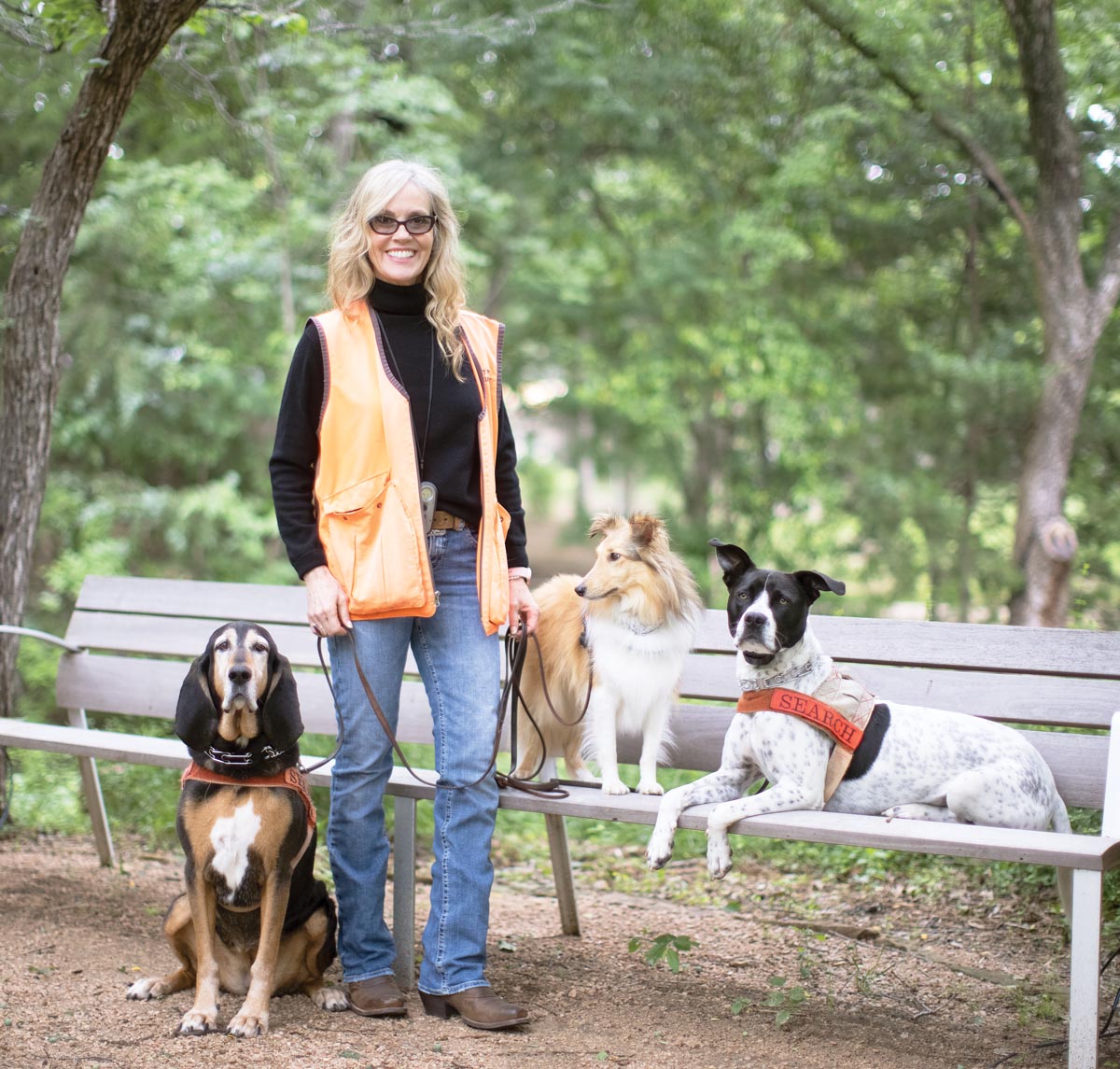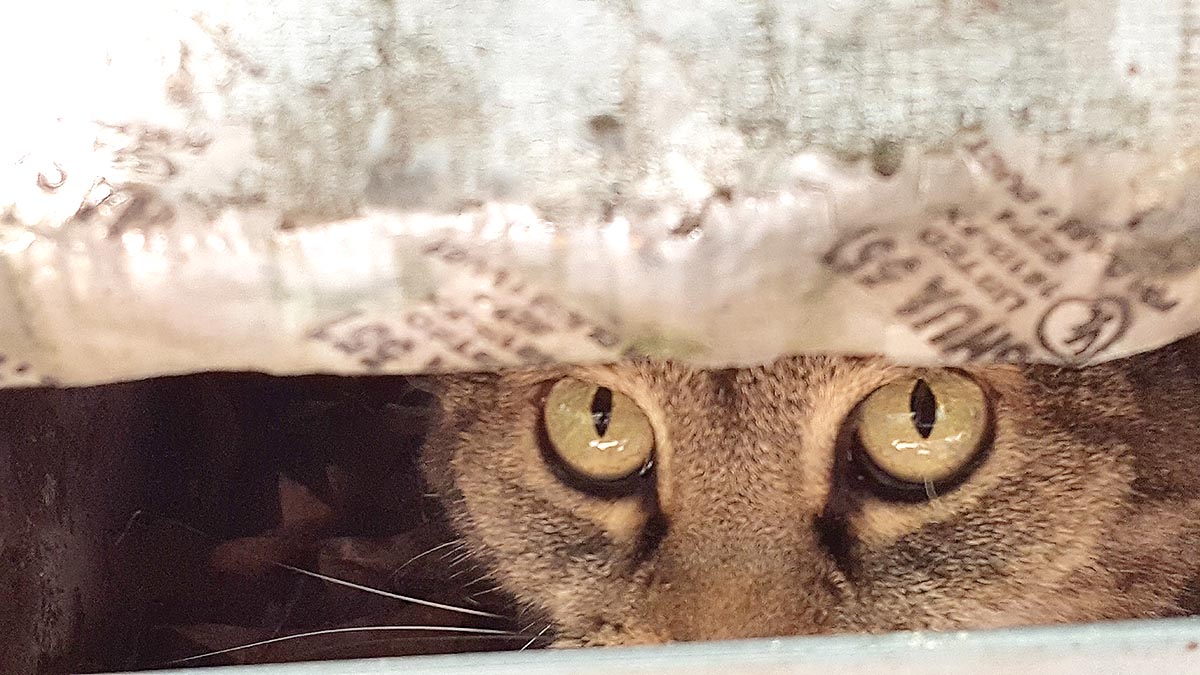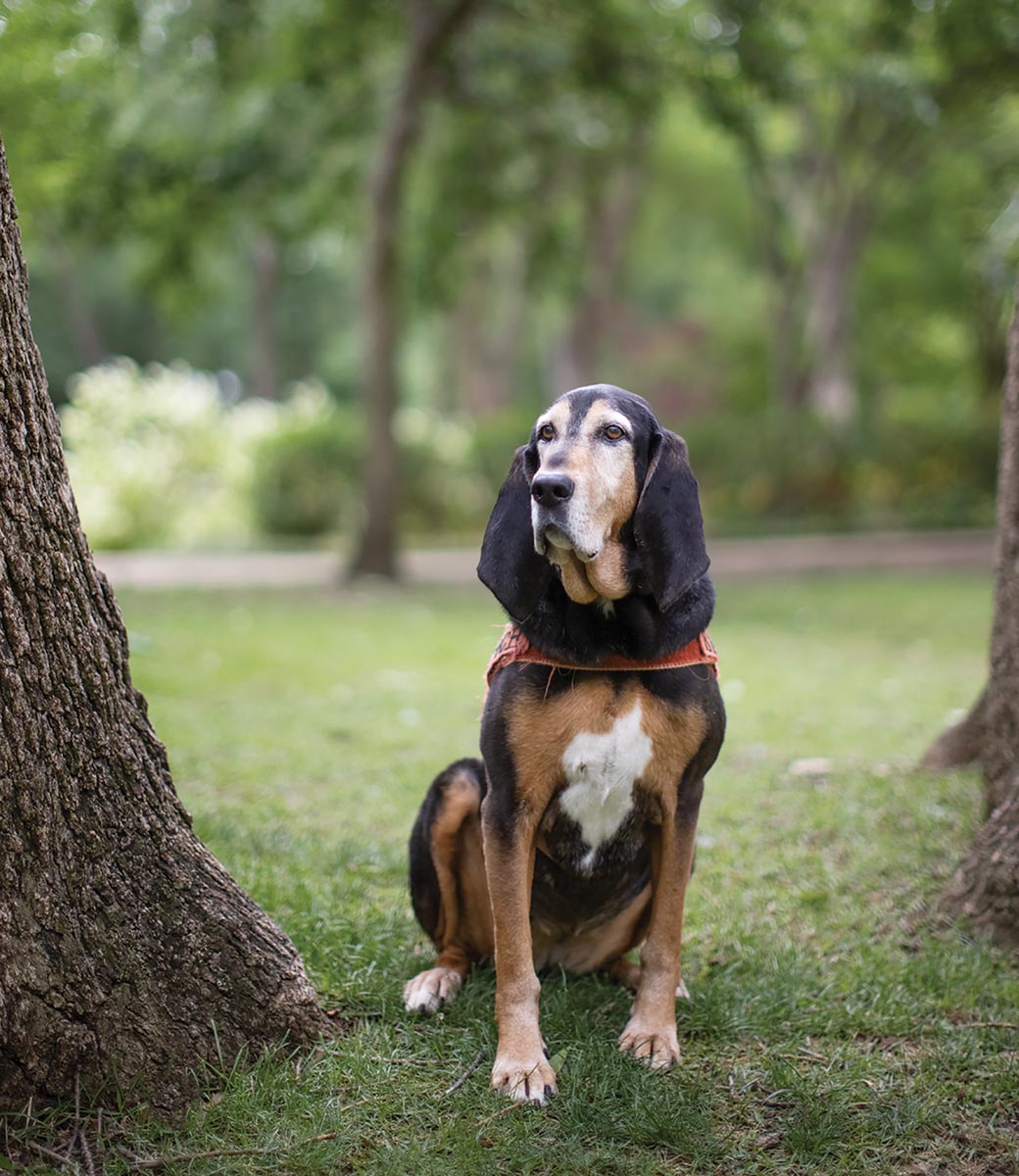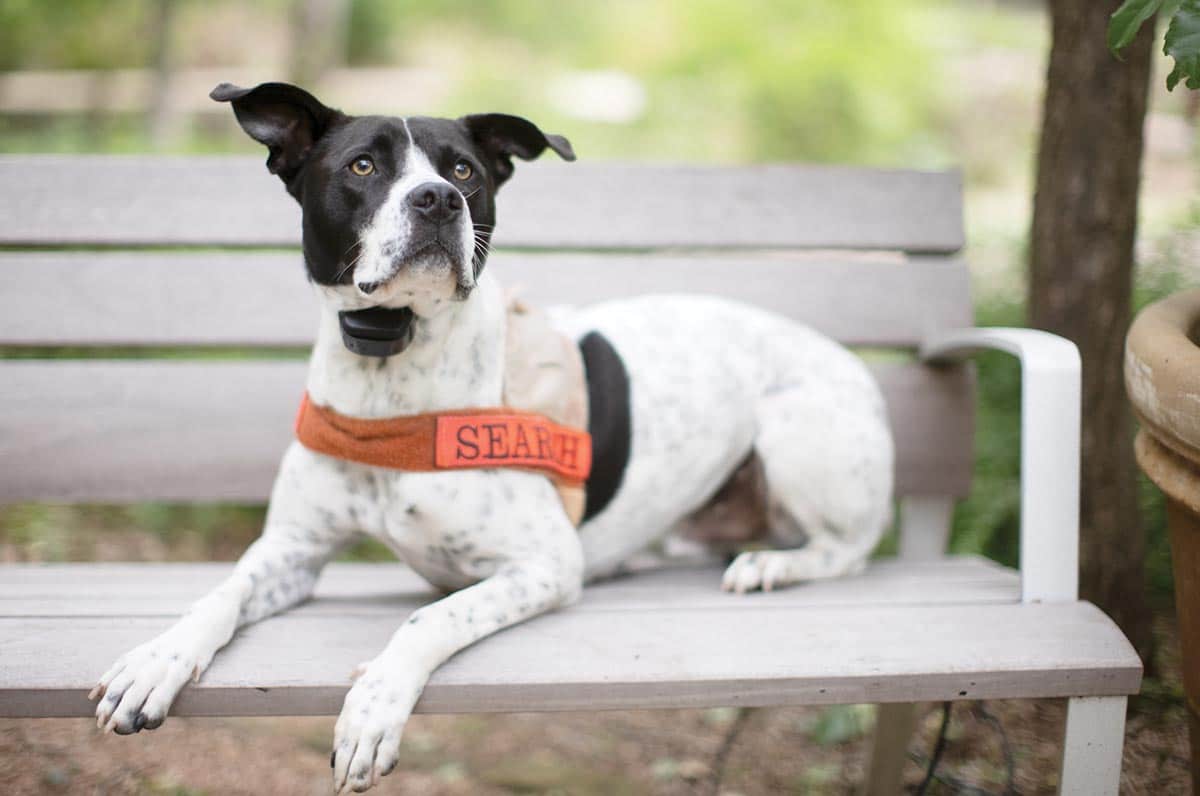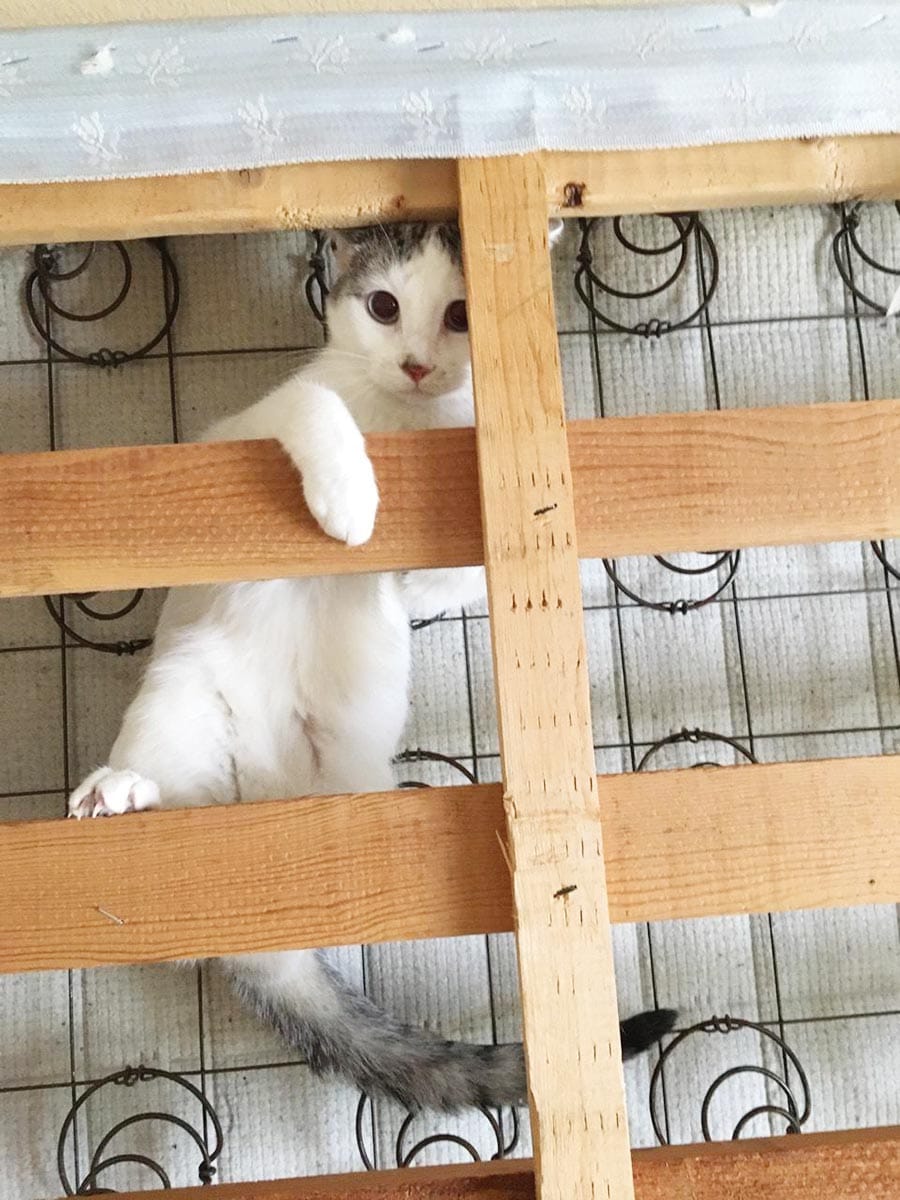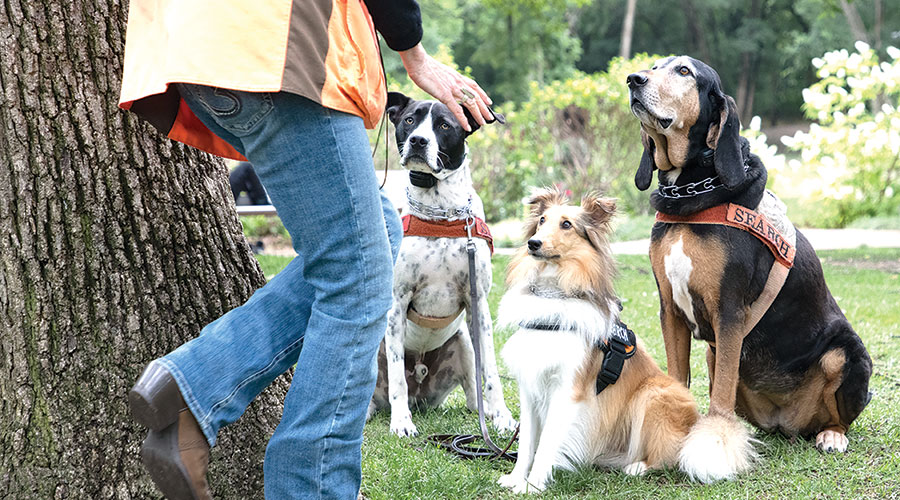
Have Nose Will Follow
By Linda Blackwell Simmons
Photos by Ron Jenkins
When a dog or cat goes missing, pet detective Bonnie Hale puts Idabel, Kaio and Buck to work
Munchkie wandered through an open gate in his backyard on a Saturday.
“I was sitting outside with my daughters when I received a text from a stranger showing me a picture of my dog,” says Angie O’Brien, Flower Mound resident and owner of Munchkie, a 3-year-old Shih Tzu. “He had gotten my number from the dog tag and said a family at a nearby soccer field had left with him. He gave me the telephone number of the family, but when I called them, they told me that Munchkie had also escaped from their yard. I was beside myself. The next day I put up signs on every post for a mile, but no luck. I cried all that day and had almost given up hope by Sunday night. Then Monday, I searched for help online. That’s when I found Bonnie.”
Bonnie Hale is a professional pet detective. She lives in Grapevine and owns and operates Lost Pet Specialist, an animal rescue business. Hale uses her own dogs to locate missing animals, among other services; she’s also a licensed private investigator and is certified by an international organization known as Missing Animal Response Network.
“Bonnie and Idabel, her amazing coonhound, came early Monday, but she warned me that with all the nearby fields and a lake, finding Munchkie might be bleak, especially since two days had passed,” O’Brien says. “We searched all the nearby streets. Almost immediately, Bonnie knew that Munchkie had not been on any of those streets. Finally, we decided to stop by the house of the family who had taken him. That’s when Idabel became very excited, and we could tell right away she had picked up Munchkie’s scent. But every time we walked to the area where the family said Munchkie had escaped from, it was a dead end. That’s when Bonnie told me if my dog had left their house, it wasn’t on foot. We threatened to call the police when Idabel verified through Munchkie’s scent that he was on their property. It turned out this family had decided to keep him.”
Thanks to Bonnie and Idabel, O’Brien was able to return home with Munchkie in tow.
It’s not unusual to see “lost pet” signs stuck to telephone poles and posted on social media daily. Well-organized rescue groups typically are able to muster lots of experienced volunteers to help track and trap dogs on the loose. Others turn to professionals such as Hale.
“The industry is fairly new, maybe 25 years at the most,” says Hale, who has been in the pet finding business for 15 years. She’s the lone human on her tracking team — her three trained search dogs comprise her staff. Idabel, an 11-year-old American black and tan coonhound, has been with Hale for about 10 years and performs the dog-tracking searches and about half of the cat searches. Buck, 2, is a mixed-breed dog who came on board last year. And Kaio, a 2-year-old sheltie, is ideal for searching out cats in tight quarters.
Hale received her training under the guidance of Kat Albrecht, a former private investigator, bloodhound handler and founder of the Missing Animal Response Network. “You reward the behavior you want and ignore or correct the behavior you do not want. Dogs already know how to use their noses to find things. That knowledge has to be molded into useful behavior.”
The tracking dog uses scent-specific smells to locate dogs. For cats, Hale says she will use scent if there is one available, but it’s not a critical element. Time is what matters most. The best results come within three days of a cat going missing, especially with indoor-only cats who have slipped outdoors. For outdoor cats, Hale’s success rate for finding the cat alive is about 20 percent. Dogs make it home about 60 percent of the time, with skittish dogs being the most difficult to track.
Hale’s recollections range from elation to sorrow.
“People comment to me how rewarding my work must be, but they aren’t really thinking about the dozens of tearful scenes I drive away from every year, whether the tears are caused by finding evidence of a violent death, or because we didn’t find anything at all.”
While she’s always on call, business picks up at specific times.
“For pet detectives, the Fourth of July is the worst day of the year. Pets and fireworks are a bad combination, with dogs suffering the most,” says Hale. Her phone rings nonstop with pleas to help.
Serving mostly the North Texas area, Hale has worked cases in Arkansas, Louisiana and Oklahoma, with Michigan and Tennessee being her farthest trips. Last year, she traveled to Colorado to search for Keela, a little mixed-breed pup who had run away from her dog walker and ended up spending 10 days in the backcountry.
“Bonnie’s advice brought Keela back to me. She’s straightforward, no-nonsense and concise, but also very empathetic and gentle,” says Suzie Ellison, Keela’s owner. “I will forever be grateful.”
Hale’s youngest client was a 14-year-old boy who used his birthday money to pay the fee. Hale declined payment from an older Grapevine couple who had lost their cat, after Idabel found it in about 5 minutes.
Other searches can be agonizing, with unhappy endings. Hale says she found the partial remains of a border terrier in a backyard near her client’s home. The dog had been missing for 11 days; a coyote had dragged the dog away. The dog’s owners had spent much of the time driving around looking for their missing pet, unaware that all along, it was only a few steps away.
“I really don’t have a typical client, but there does seem to be a preponderance of childless people who hire me, maybe because they have placed their nurturing instincts on their pet.”
Hale says she would not trade her vocation and her treasured tracking animals for anything. When the dogs aren’t working, they live a “regular” dog’s life at home.
“Despite the odds, there’s nothing quite like being able to use one of my search dogs to end a 24- to 72-hour siege of panic, anxiety and guilt for a client, one who thought her heart was permanently broken.”
Linda Simmons is a Fort Worth-based freelance writer.
THE DETAILS
Lost Pet Specialist Bonnie Hale is based in Grapevine, but she travels for work. The charge for local searches is $500; for out-of-state searches, the fee can approach $2,500. She also does a 90-minute phone consultation for $175, in which she advises clients on actions to take on their own. Learn more at lostpetspecialist.com.

